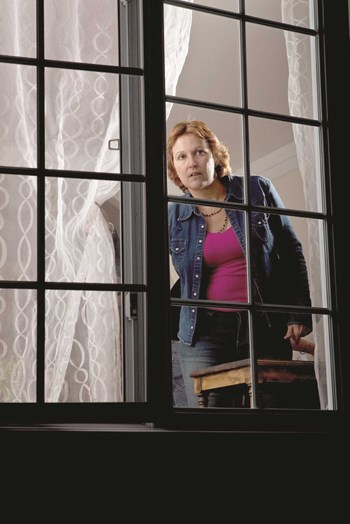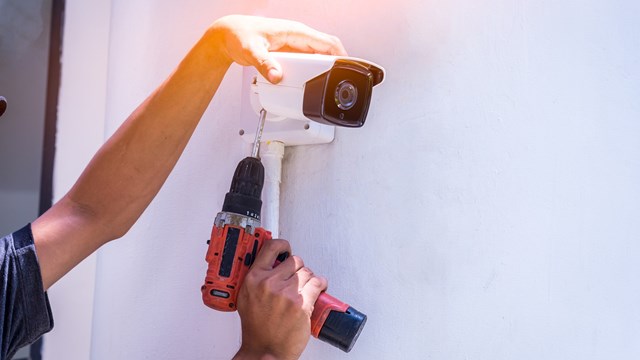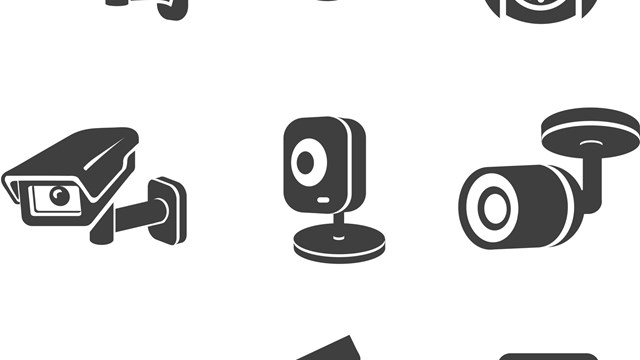
It’s often said that safety starts at home—and while many HOAs spend lots of money on sophisticated security and access control systems to protect residents and property, others opt for lower-tech solutions to neighborhood security and crime prevention.
One such solution is the neighborhood watch organization: a group of concerned citizens coming together to make a commitment to be vigilant and observant and to do what they can in their own community to prevent crimes like vandalism, burglary, theft or even arson.
Neighborhood Watch, Block Watch, Building Watch, CrimeWatch—whatever you choose to call it, it’s one of the most effective—and least costly—ways to prevent crime. It also forges bonds among residents and improves relations between police and the communities they serve.
In 1985, the Boston Police Department launched a Neighborhood Watch Unit based on the philosophy that residents have the power to change neighborhoods block-by-block and street-by street. Neighborhood watch groups work in conjunction with the Boston PD to deter crime and reduce fear. The BPD provides the skills and tools necessary to create and maintain organized teams that work with the police to improve the quality of life of residents.
“Neighborhood watch groups are very effective when they are well organized and there is plenty of neighborhood support,” says Carolyn Macneil, who is the director of the BPD’s Neighborhood Watch Unit division. “They are a preventative measure and a deterrent towards crime in the neighborhood. Neighbors and residents become our eyes and ears. Residents are in their neighborhood much more than any police officer can be—the more eyes and ears we have on the street, the better everybody is.”
Michelle Boykins, a spokeswoman for the National Crime Prevention Council, believes that watch programs greatly reduce crime. Boykins quotes as evidence a 2008 study by the U.S. Justice Department, “Does Neighborhood Watch Reduce Crime?” On average, the study says, there was a 16 percent decrease in crime in communities with a watch group compared to control areas. However, the study cautions, “the results of evaluations are mixed and show that some programs work well, while others appear to work less well.”
“Neighborhood watch programs can provide a useful function, but you want them to be helpful, not harmful,” adds Donna DiMaggio Berger, a shareholder attorney with the national community association law firm of Becker & Poliakoff, which has offices in Florida. “Everybody on the watch has to be educated about what their real role is, which is to observe and report not necessarily interact.”
Even if an association already employs electronic surveillance cameras and other high-tech techniques, there are always blind spots and criminals need to know there’s someone watching at all times. Electronic surveillance, as important as it is, can give an association a false sense of security.
Experts believe that prevention methods work best when combined with a surveillance system since surveillance systems are only in certain areas and security guards or roving staff vehicles can’t be everywhere.
“A neighborhood watch should be in addition to any other security measures being used in the community, not in lieu of,” says Berger.
Establishing a Group
A motivated individual, a few concerned residents, a community organization or a law enforcement agency can spearhead the efforts to establish a neighborhood watch group. In other words, anyone can start a neighborhood watch group and it costs very little to do so other than the investment of personal time. You do, however, have to have willing participants.
“Residents typically form watch groups,” says Macneil. “Most of the calls we get are people who are interested in forming a group after a significant incident or after a series of smaller incidents that sort of get pieced together, and people recognize that and say we should get together and form a group. It also happens when things are percolating in the neighborhood and residents realize they have to become more aware of their surroundings.”
Watch groups are formed in various ways but many experts believe the first step should be contacting local law enforcement.
The model that the Boston Police Department subscribes to is to phone or email their Neighborhood Watch Unit division. Then the group organizer can choose a convenient location, date and time for the meeting and assemble a group of interested neighbors by canvassing the neighborhood and distributing meeting notifications to neighbors. Other municipalities may have different protocols.
“Watch groups can go from the simple to the more complex just in terms of how many people and how they meet and how they organize,” says Macneil. “It doesn’t cost anything to form a watch group, it just requires a bit of people’s time.”
“You should call your insurance agent then call local law enforcement and have them come over and do a presentation,” says Berger. “You should choose your volunteers carefully. You don’t want to have 80-year-old Murray on a walker doing a neighborhood watch. You are going to want people who are capable of doing the watch without getting harmed.”
According to Boykins, program watch groups can also sponsor bike safety workshops, checking community lighting after the sun goes down and start neighborhood walking clubs.
How They Work
Once such groups are established, they work to fight crime in several ways. They can conduct home security surveys, give tips about going on vacation, put signs outside and stickers on homes that make would-be burglars think twice, get more powerful outdoor lighting installed, and more.
There are many things that watch groups can look out for. Among the more serious “red flags” are someone looking into windows or parked cars, open garage doors, property being taken out of houses where no one is home, lighting fixtures that are broken out, cars or vans moving slowly with no apparent destination, strangers getting out of a car to talk to a child, groups of unknown young people wandering around, newspapers piling up in front of a home and abandoned cars.
In addition to looking at suspicious situations, members of watch groups can also look after people who may be isolated and vulnerable, such as the elderly and the disabled, and take note of situations that might invite trouble, such as broken or non-working street lights. And above all, members must stay alert.
“Neighborhood watch groups can take many forms but it’s all the eyes and ears and being attentive to what suspicious activity is and what does and doesn’t belong in any neighborhood and getting people to call the police when something isn’t right,” says Macneil. “If you are in a condo building you still need to be attuned to your neighbors and who belongs in a complex and or building and who doesn’t.”
Boykins adds “In a condo or apartment complex, it may be more difficult to know all of your neighbors and to know if someone doesn’t belong or should be considered suspicious.”
“Watch groups in condos can pose certain challenges,” warns Macneil. “Sometimes it’s hard to single out exactly where suspicious activity or criminal activity is coming from in, for example, a high-rise condominium. If it’s a house or a single unit townhouse you know exactly where it’s coming from but when it’s in a multi-unit housing complex it becomes tricky.”
Zimmerman Case Atypical
Nowadays, unfortunately, when people think of neighborhood watch groups, they all too often think of the case of George Zimmerman, a volunteer member of a neighborhood watch group in Florida, who, in February 2012, followed an unarmed teenager, Trayvon Martin, whom he thought was acting suspiciously. Despite the fact that a police officer told Zimmerman he didn’t have to follow Martin, Zimmerman continued his pursuit and, after a struggle, shot and killed the unarmed teen. The case became a cause célèbre, with widespread allegations of racism on Zimmerman’s part, and Zimmerman’s eventual acquittal on second-degree murder charges didn’t end the controversy.
In the wake of the Zimmerman case, there were some condemnations of neighborhood watch groups in general as vigilantes. But soon, people realized that there is a big difference between a legitimate, well-organized neighborhood watch group, which acts as the eyes and ears of the community, and vigilantism, or people taking the law into their own hands. The key seems to be cooperation between the watch group members and law enforcement.
While, thankfully, situations like the Zimmerman case are very rare, it isn’t unknown to have a volunteer on a neighborhood watch group who seems a little over-zealous. If this is the case, says Boykins, “then it is best to discuss their behavior with them or hold a meeting with the watch group to discuss guidelines and parameters for all volunteers to follow.”
For most condos and HOA developments, especially those that are spread out, a neighborhood watch group would be worth a try. Residents or boards that are interested should contact their local police or sheriff’s departments.
“It’s all relationship building,” says Macneil. “The greater the relationships that the police departments have with the residents and the residents have with each other, the stronger the likelihood of safer buildings and safer neighborhoods.”
Raanan Geberer is a freelance writer and a frequent contributor to New England Condominium. Staff writer Christy Smith-Sloman contributed to this article.






Leave a Comment